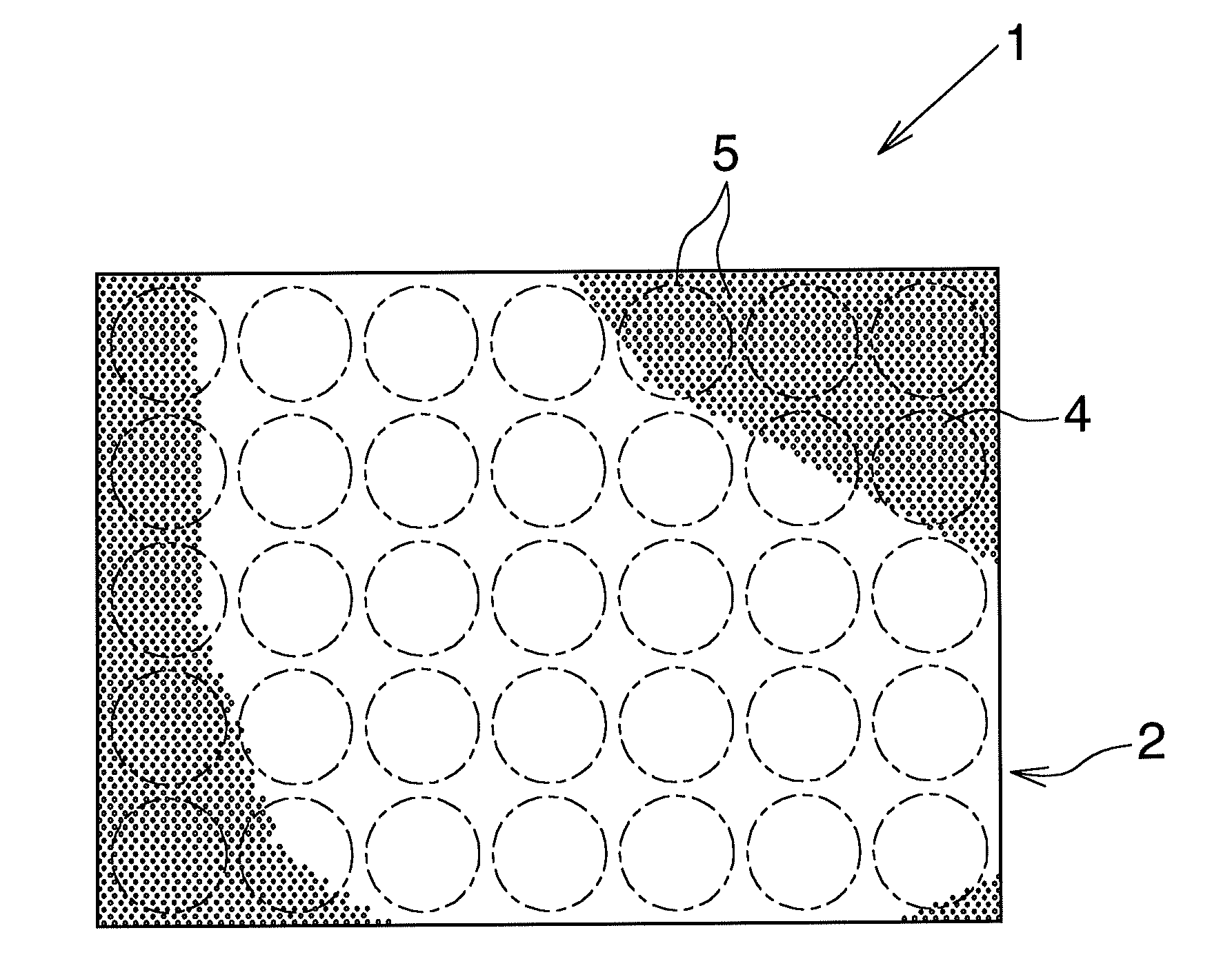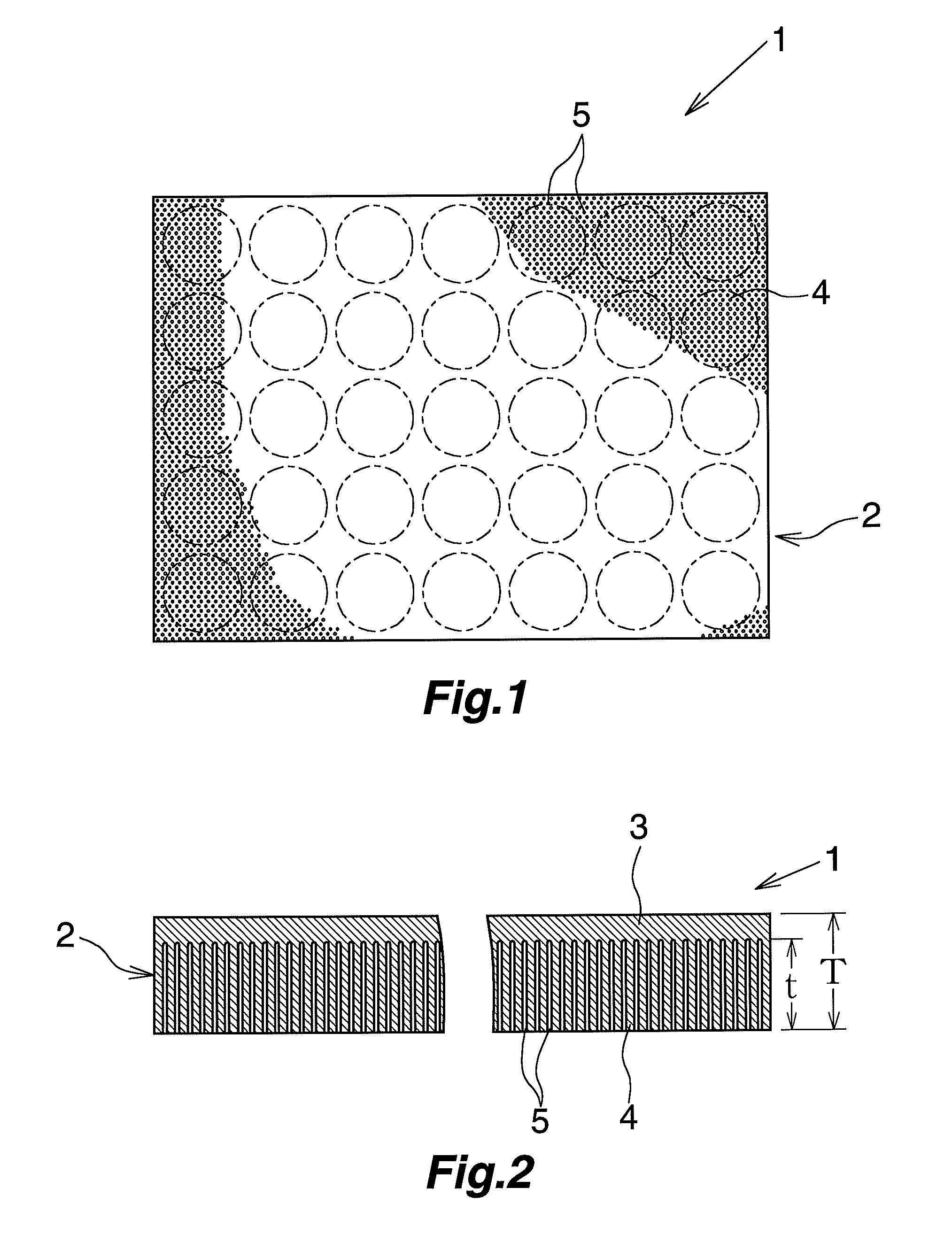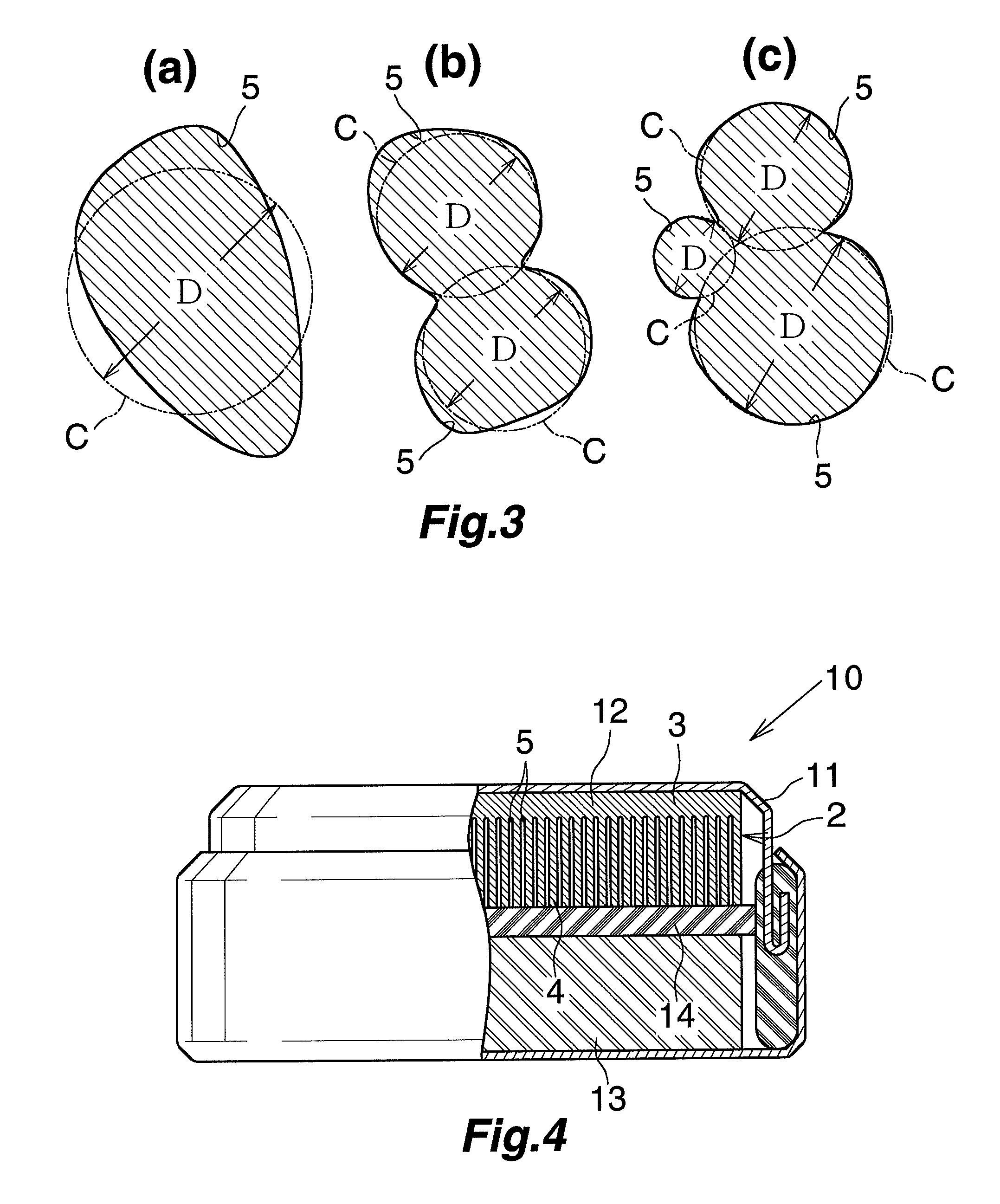Negative electrode material for lithium secondary battery
a secondary battery and negative electrode technology, applied in the direction of cell components, final product manufacturing, sustainable manufacturing/processing, etc., can solve the problems of low available current density, internal short circuit, and negative electrode formed of such a carbon material, so as to achieve effective reduction of charging/discharging, high charge/discharge capacity, and capacity reduction
- Summary
- Abstract
- Description
- Claims
- Application Information
AI Technical Summary
Benefits of technology
Problems solved by technology
Method used
Image
Examples
example
[0070]A high-purity annealed aluminum foil (purity: 99.9 mass %, thickness: 100 μm) was provided and subjected to a first etching treatment; i.e., direct current etching through application of a DC current (current density: 20 A / dm2) for 90 seconds in a 80° C. aqueous solution containing hydrochloric acid (7 mass %) and sulfuric acid (0.1 mass %). Thereafter, the high-purity annealed aluminum foil was subjected to an intermediate treatment; i.e., immersion in a 90° C. aqueous solution containing ammonium formate (0.1 mass %) for 40 seconds (this treatment was carried out once). Subsequently, the high-purity annealed aluminum foil was subjected to a second etching treatment; i.e., direct current etching through application of a DC current (current density: 10 A / dm2) for 320 seconds in a 80° C. aqueous solution containing sodium chloride (5 mass %). Thus, a lithium secondary battery negative electrode material was produced.
[0071]The surface of the thus-produced lithium secondary batte...
PUM
| Property | Measurement | Unit |
|---|---|---|
| pore size | aaaaa | aaaaa |
| thickness | aaaaa | aaaaa |
| thickness | aaaaa | aaaaa |
Abstract
Description
Claims
Application Information
 Login to View More
Login to View More - R&D
- Intellectual Property
- Life Sciences
- Materials
- Tech Scout
- Unparalleled Data Quality
- Higher Quality Content
- 60% Fewer Hallucinations
Browse by: Latest US Patents, China's latest patents, Technical Efficacy Thesaurus, Application Domain, Technology Topic, Popular Technical Reports.
© 2025 PatSnap. All rights reserved.Legal|Privacy policy|Modern Slavery Act Transparency Statement|Sitemap|About US| Contact US: help@patsnap.com



